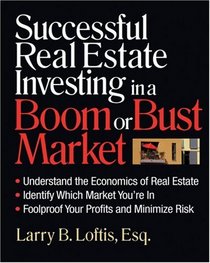Search -
Successful Real Estate Investing in a Boom or Bust Market: Understand the Economics of Real Estate, Identify Which Market You're In, Foolproof Your Profits and Minimize Risk
Successful Real Estate Investing in a Boom or Bust Market Understand the Economics of Real Estate Identify Which Market You're In Foolproof Your Profits and Minimize Risk
Author:
Good real estate investors make money in every type of market, whether it is a normal, boom, or bust market ? their techniques and strategies are just different for each market. Successful Real Estate Investing in a Boom or Bust Market begins by explaining the economics of real estate. Real estate demand, sales prices, and sales v... more »
Author:
Good real estate investors make money in every type of market, whether it is a normal, boom, or bust market ? their techniques and strategies are just different for each market. Successful Real Estate Investing in a Boom or Bust Market begins by explaining the economics of real estate. Real estate demand, sales prices, and sales v... more »
ISBN-13: 9781419596124
ISBN-10: 1419596128
Publication Date: 3/6/2007
Pages: 256
Rating: ?
ISBN-10: 1419596128
Publication Date: 3/6/2007
Pages: 256
Rating: ?
0 stars, based on 0 rating
Genres:
- Business & Money >> General
- Business & Money >> Industries >> Real Estate >> General
- Business & Money >> Industries >> Real Estate >> Investments
- Business & Money >> Popular Economics




